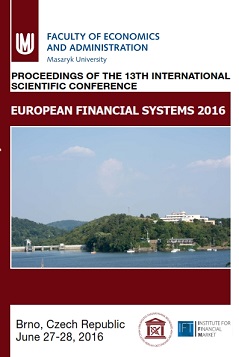Hedging Case Study in the Exchange Rate Commitment Regime Environment
Hedging Case Study in the Exchange Rate Commitment Regime Environment
Author(s): Jaroslava Dittrichová, Libuše Svobodová, Ivan Soukal
Subject(s): Business Economy / Management, Micro-Economics, International relations/trade, Financial Markets, Fiscal Politics / Budgeting, Accounting - Business Administration
Published by: Masarykova univerzita nakladatelství
Keywords: Financial derivatives; forward; hedge; foreign exchange risk; monetary policy;
Summary/Abstract: The paper deals with topic of hedging as an instrument of foreign exchange exposure treatment. This case study is focused on traditional export-oriented company PETROF, s. r. o. Analysis of scenarios is performed by the loss-profit comparison. The study dataset is consisted of internal financial statements gathered in period from 2010 to 2015 and provided the company representatives. Analyses are based on spot rates effective at studied periods and singed hedging contracts – forward derivatives. Analyses include data processing and proposals for consideration of macroeconomic factors that determine the company's business environment. Qualitative research is concluded with a discussion on proposed approaches and instruments. Despite the fact that in November 2013 Czech national bank entered foreign exchange interventions regime with exchange rate commitment of 27 CZK/EUR and so the companies knows the expected rate of the Czech currency, the topic is still current. The importance of the topic will be greater with the upcoming end of intervention regime in 2017 when we can expect increased volatility of the Czech crown again.
Book: European Financial systems 2016. Proceedings of the 13th International Scientific Conference
- Page Range: 111-118
- Page Count: 8
- Publication Year: 2016
- Language: English
- Content File-PDF

